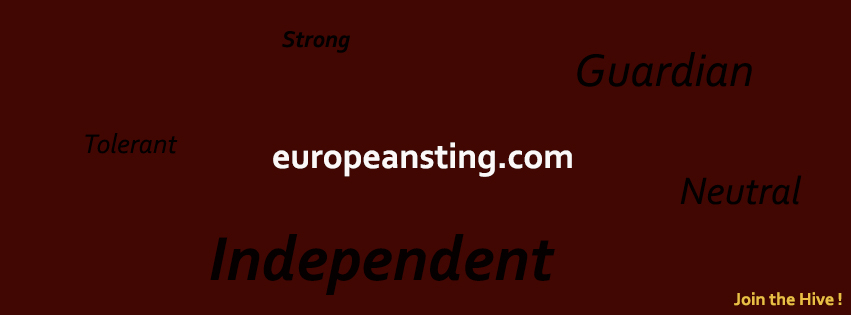
This article is brought to you thanks to the collaboration of The European Sting with the World Economic Forum.
Author: Valentin de Miguel, Senior Managing Director for Strategy & Consulting Lead for Growth Markets, Accenture
- Countries are starting from different baselines and in different conditions on their energy transition journeys.
- The World Economic Forum’s System Value framework can help guide this process in emerging markets – who can also learn from those further along.
- Here’s how these countries can start to accelerate their progress towards a clean energy future.
The energy transition is more pressing than ever – and as governments look to economic recovery in the wake of COVID-19, they are recommitting to their energy transition plans and investing to drive faster progress.
But different countries are starting from very different baselines. One example is varying levels of electricity access; close to 900 million people are still without reliable access to electricity, while Sub-Saharan Africa’s access to electricity rate is around 45%. Plus, the lion’s share of energy demand growth will come from emerging markets over the next decade.
In these markets, significant investment is needed to fund this extra power generation capacity. But energy must also remain affordable, given its importance in driving economic growth and providing a basic standard of living. An orderly transition is needed – one that balances the imperatives of energy transition, sustainability and economic justice.
The pace of energy transition also varies
Countries are not only starting from different baselines; they’re also operating in different conditions. Many emerging markets have large domestic reserves of coal, oil and gas. This typically results in a fossil-fuel biased generation mix, driving up the opportunity cost of transitioning to a sustainable energy future.
The pace of energy transition naturally has huge implications for employment and economic opportunity. But as countries mature along the energy transition journey and integrate more renewables into the energy mix, they are at the same time able to enable economic growth and transition to a more sustainable, affordable and resilient energy system. This is the “path to maximizing system value.”
The path to maximizing system value
Over the past 10 years, a typical path has emerged – a way to move from a traditional energy system to a zero-carbon emission system. From the System Value work at the World Economic Forum, three key stages have been identified:
1. Variable renewables expansion, increased efficiency and supporting investments in the grid and interconnections.
2. When variable renewables expand to the point that instantaneous variable renewables often exceed 50% of electricity consumption, then it’s time to increase digital flexibility – for example, storage, ancillary services markets, wider electrification of transport and heating, plus demand optimization.
3. Finally, net-zero energy mix. To achieve net zero requires an integrated energy system and solutions beyond electrification of other sectors like transport and heating, such as hydrogen and carbon capture, use, and storage.
Countries and regions are at different stages – but the good news is that they can learn from those ahead of them on the journey.

Accelerating the transition in emerging markets
So how can emerging markets make the greatest strides towards the energy transition? Countries are already seizing the opportunity to stimulate growth and move toward zero carbon at the same time.
For instance, India is setting up renewable energy zones to attract foreign investment and ease the way for solar and wind deployment.
On transport and industrials: China is electrifying transport, including trains and electric buses, to support clean cities and light duty electric vehicles. Brazil is using incentives to promote sustainable biofuel development, with a focus on economic growth and employment.
As these responses develop, emerging economies can look to these policy experiences, and consider how to:
1. Make the most of complementary natural resources (think hydro supporting solar growth) to accelerate decarbonization.
2. Leverage industrials-funded power purchase agreements (PPAs) or renewable zones to attract foreign investment and private funding, fuelling expansion of the renewables industry.
3. Collaborate across sectors – for example, look at collaboration opportunities across the energy and transport sector to build out the electric vehicle (EV) industry and its enabling infrastructure.
What’s the World Economic Forum doing about the transition to clean energy?
Moving to clean energy is key to combating climate change, yet in the past five years, the energy transition has stagnated.
Energy consumption and production contribute to two-thirds of global emissions, and 81% of the global energy system is still based on fossil fuels, the same percentage as 30 years ago. Plus, improvements in the energy intensity of the global economy (the amount of energy used per unit of economic activity) are slowing. In 2018 energy intensity improved by 1.2%, the slowest rate since 2010.
Effective policies, private-sector action and public-private cooperation are needed to create a more inclusive, sustainable, affordable and secure global energy system.
Benchmarking progress is essential to a successful transition. The World Economic Forum’s Energy Transition Index, which ranks 115 economies on how well they balance energy security and access with environmental sustainability and affordability, shows that the biggest challenge facing energy transition is the lack of readiness among the world’s largest emitters, including US, China, India and Russia. The 10 countries that score the highest in terms of readiness account for only 2.6% of global annual emissions.
To future-proof the global energy system, the Forum’s Shaping the Future of Energy and Materials Platform is working on initiatives including, Systemic Efficiency, Innovation and Clean Energy and the Global Battery Alliance to encourage and enable innovative energy investments, technologies and solutions.
Additionally, the Mission Possible Platform (MPP) is working to assemble public and private partners to further the industry transition to set heavy industry and mobility sectors on the pathway towards net-zero emissions. MPP is an initiative created by the World Economic Forum and the Energy Transitions Commission.
Is your organisation interested in working with the World Economic Forum? Find out more here.
Energy companies need to respond with new business models
As the energy transition progresses, energy companies must think beyond traditional retail supply models. Think of Queensland, Australia, where a large percentage of houses already have rooftop solar panels, driving down their need for grid-supplied energy. It’s the equivalent of what has already happened in telecoms, with around half of US homes already entirely wireless and no longer needing telecoms connections.
So how will energy companies respond in the future? Answer: diversify and challenge legacy industry models and boundaries. Become an energy services company, or a home services company… join multiple products per customer, and create stickiness to generate new revenue streams and drive margins.
Customer experience is at the heart of this future vision, with loyalty harder than ever to secure and maintain. Meanwhile, policy-makers and regulators can help energy companies navigate this challenging landscape with regulatory stability – and allow them to really drive towards a clean energy future.
Decarbonizing energy is not an if, it’s a how. Countries and businesses are moving ahead with renewables – because standing still is more of a risk than pressing ahead.



















Leave a Reply